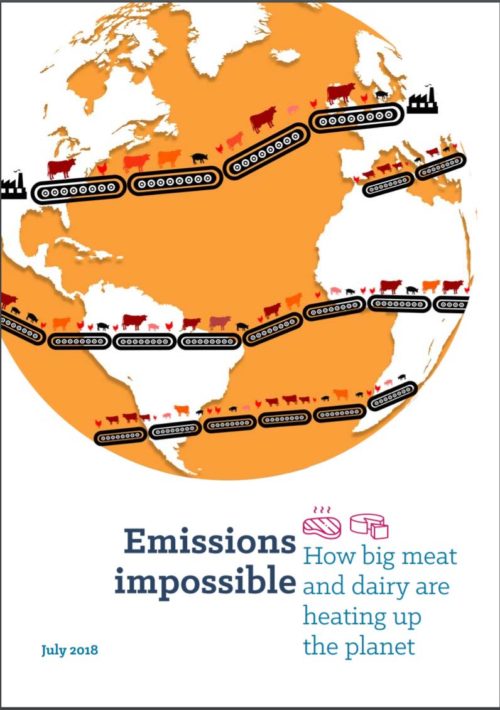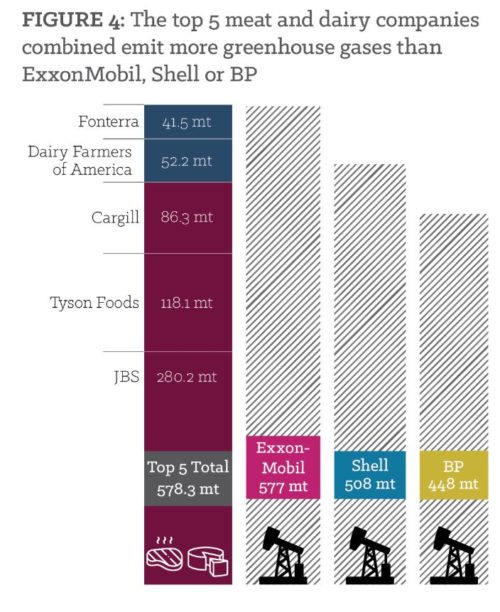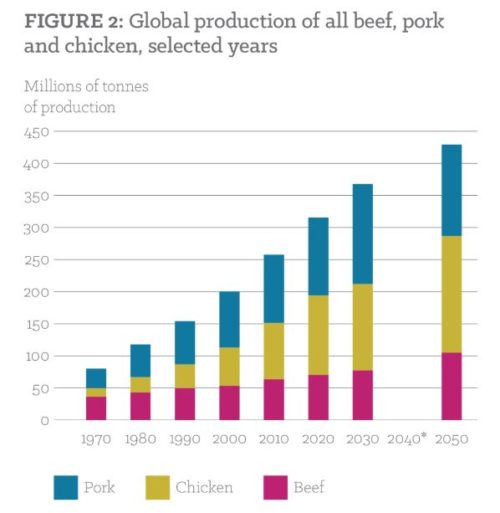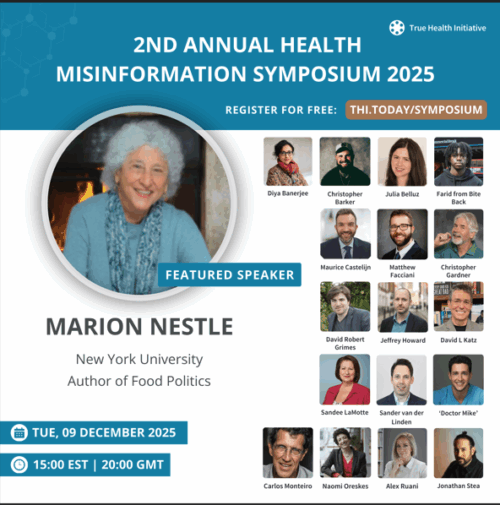FoodNavigator.com on what’s happening in the dairy industry
I think this collection of articles from FoodNavigator on the dairy industry is especially clear in revealing three notable trends: (1) the ongoing decline in milk consumption, (2) a more recent decline in yogurt consumption, and (3) an increase in production, availability, and marketing of dairy products high in fat. Take a look:
Special Edition: Dairy innovation
It’s been a challenging year for many dairy brands, with continued weakness in fluid milk and yogurt categories and growing competition from dairy-free alternatives. But there has been no shortage of innovation, spanning everything from ‘intentionally less sweet’ high protein yogurt launches to whole milk and even ‘triple cream’ offerings as fat roars back in some parts of the category.
- Retail sales of French-style yogurt Oui have topped $100m, says General Mills: US retail sales of yogurt have tailed off in the past two years as Greek has lost its luster. But this is just a temporary blip, predicts the president of General Mills’ US yogurt business, who is confident the overall category will return to growth… Read
- Peak Yogurt taps into keto trend with 17% milk fat ‘triple cream’ yogurts: ‘Milk fat is one of nature’s original superfoods’: Fat is back in the dairy aisles, if the recent proliferation of products touting their whole milk (c. 3.5% milk fat) credentials is anything to go by. But San Francisco-based start-up Peak Yogurt is taking the trend one step further in a bid to carve a niche in the market with ‘triple cream’ yogurts boasting 15-17% milk fat with low or no added sugar that tap into the keto trend… Read
- Tillamook CEO talks dairy innovation and ambitions of reaching $1bn in sales: Tillamook County Creamery Association has had a loyal regional following in the Pacific Northwest for more than 100 years (founded in 1909), but in order to secure its next 100 years the dairy co-operative needed to execute a national growth strategy set forth by CEO Patrick G. Criteser who has ambitions of hitting $1bn in annual sales… Read
- Whole-fat and convenient merchandising drive dairy sales moving forward, IRI: Fat has not only become more accepted among consumers but also the focal point of many popular diets such as keto and paleo. As a result, sales of some, not all, whole-fat dairy products are reaping the benefits of a renewed interest in fat influenced by convenient merchandising at retail, according to IRI… Read
- Full fat and Icelandic pockets of growth in lackluster US yogurt market; while flavored milk and lactose-free help offset declines in fluid milk: US retail sales of yogurt have continued to fall over the past year, although there have been pockets of growth in Icelandic style and full fat products, according to data from Nielsen and SPINS… Read
- American cheesemakers must balance innovation & cost with consumer education to thrive: Free from the constraints of the appellation d’origine contrôlée that dictate how cheese in Europe is made, American cheese makers are able to add innovative twists to traditional methods to create unique products that meet evolving consumer demand, according to leadership at the American Cheese Society… Read
- Siggi’s launches whole milk Simple Sides, says top line grew 36% in latest 52 weeks: Icelandic skyr brand siggi’s aims to expand its share of the US yogurt market with a move into the ‘mix-ins’ category via the launch of Simple Sides, a new line of whole milk skyr with a side of dried fruits and nuts containing no added sugar… Read
- Chobani gears up for national rollout of low sugar, high protein, Hint Of yogurts: Chobani is rolling out its Hint Of… low sugar, high protein, Greek yogurts nationwide in August following a successful debut in the Pacific, Northeast and Florida markets, with ‘new formats’ of the brand hitting stores in January 2019… Read
- Arla introduces skyr cream cheese line: ‘We’re trying to get in early on that adoption curve…’: It’s not as big as Greek just yet, but the explosive growth of Icelandic skyr in the yogurt aisle could inspire a flurry of skyr-infused spin-offs in other parts of the store, predicts Arla Foods Inc, which has recently launched a skyr cream cheese in the US market with three times the protein and just over half the calories of regular cream cheese… Read
- General Mills unveils ‘intentionally less sweet’ YQ by Yoplait: ‘It’s unlike anything that exists in the yogurt aisle today’: Following on from the success of its French-style yogurt Oui, General Mills has unveiled YQ by Yoplait, a 99% lactose-free yogurt made with ultra-filtered milk (milk filtered to concentrate the protein and reduce the lactose/milk sugar) that “delivers big on protein with an intentionally less sweet taste.”.. Read
- Ample Hills Creamery hopes square pints will build brand awareness, loyalty and community: By thinking inside the box, the husband and wife duo behind Brooklyn-based ice cream company Ample Hills Creamery hopes to better connect consumers to each other and the brand with the launch of unique square-shaped pints at retail… Read
- Got milk? Yes, but not as we used to know it, Jim: While sales of plain dairy milk have been declining for years, and US yogurt production has dropped off after peaking in 2014, new data shows the continued growth of cheese, butter, and ready-to-drink coffee, yogurt drinks and protein beverages featuring dairy milk, suggesting that the growing interest in all things plant-based has not prompted a mass consumer exodus away from dairy, but that consumption habits are changing… Read
- Plant-based and dairy drive growth in yogurt side-by-side, Danone exec says: While still growing at a healthy clip, the yogurt category is slowing slightly – but Danone North America still sees significant potential for the segment, especially related to options that are plant-based, lower in sugar, packed with science-back probiotic strains and dairy-based, according to a top company executive… Read
- Children are drinking less milk and juice as they get older… But what are they drinking instead? New government data* shows that water accounted for 43.7% of beverage consumption among US kids aged 2-19 in the period 2013-2016, followed by milk (21.5%), soft drinks (19.9%), and 100% juice (7.3%)… Read
- a2 Milk rolls out at Walmart: ‘It’s a real validation of our business proposition’: Tummy-friendly brand a2 Milk is now in more than 6,000 stores in the US, including Walmart. However, the reception from the wider dairy industry has been “lukewarm at best,” claims its US CEO Blake Waltrip: ‘There’s an irrational fear that this is somehow going to vilify milk, when in fact it’s going to bring consumers back to milk.”.. Read





